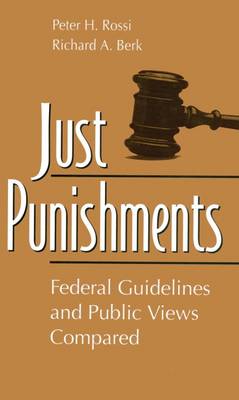The sentencing guidelines written by the U.S. Sentencing Commission for the federal crime courts were designed to lead to uniform the just punishments for convicted criminals. How well did the Commission's judgments about what were just punishments compare to the view of the American public? Using data from a 1994 national household survey, the authors compare the punishments described by the Commission to those desired by the public.Contrary to the frequency claims of excessive leniency on the part of judges that are often asserted by journalists and shapers of opinions, Rossi and Berk find strong correspondence between the median sentences deemed appropriate by the public and the sentences prescribed by the guidelines. Although the authors conclude that the Commission was able to match prescribed punishments closely to the American consensus for most crimes, in one category - drug trafficking offenses - the guidelines were much harsher in dealing with offenders.The national survey used a factorial survey as its design strategy, allowing for analysis of a large variety of federal crimes and variations in the social characteristics of convicted felons. A wealth of detail, along with ample graphic and tabular illustrations, extends the book's application to issues of consensus and variations in punitiveness by region and socioeconomic characteristics of respondents.
- ISBN10 0202305732
- ISBN13 9780202305738
- Publish Date 19 August 1997
- Publish Status Temporarily Withdrawn
- Out of Print 28 January 2021
- Publish Country US
- Publisher Taylor & Francis Inc
- Imprint AldineTransaction
- Format Paperback
- Pages 243
- Language English
